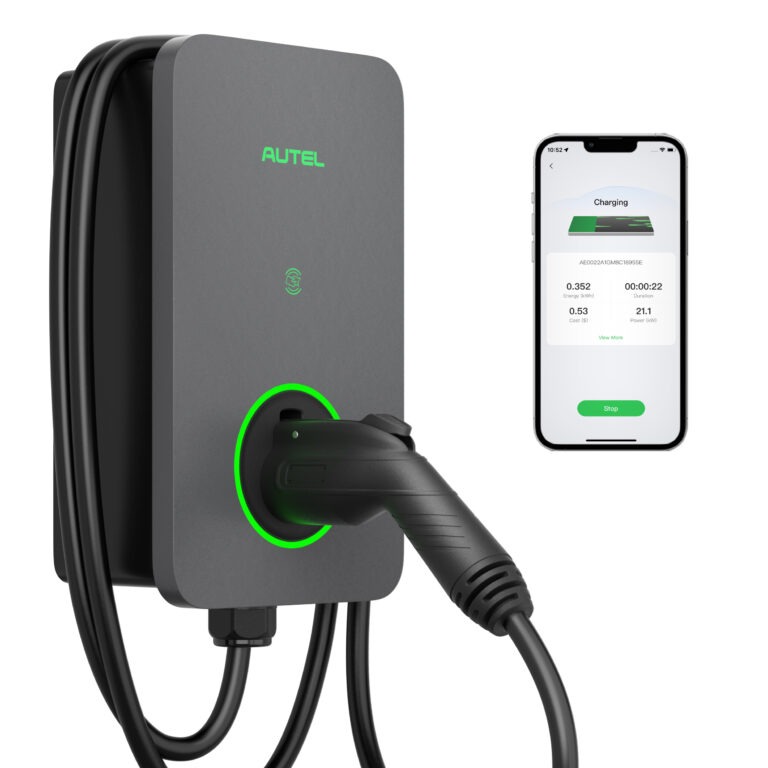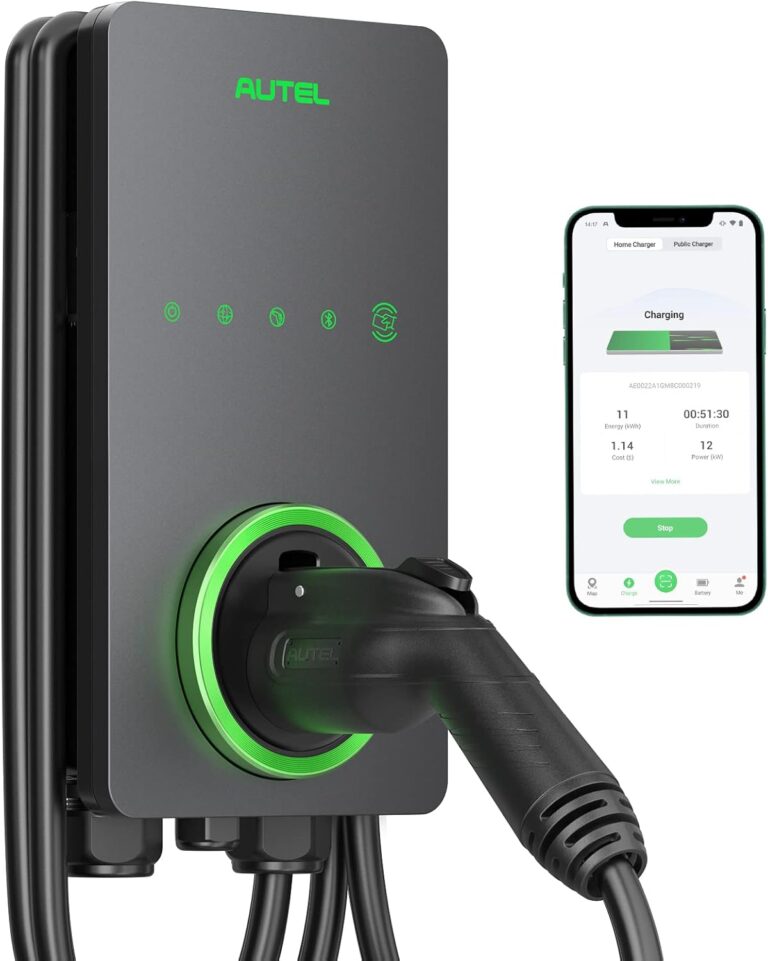
Audi A5 VIN Decoder and Options List
Audi A5 VIN Check and Audi A5 VIN Lookup
Where Do I Find My Audi A5 VIN?

Your Audi A5 VIN (Vehicle Identification Number) is a 17 character code that uniquely identifies your vehicle and its factory configuration. You can find it in several easy to access locations:
• On the driver’s side of the dashboard, visible through the lower corner of the windshield.
• On the sticker inside the driver’s side door jamb near the latch or hinge area.
• Printed in your vehicle’s registration, title, and insurance documents.
• On the engine bay bulkhead or stamped near the firewall on some models.
The VIN is used to decode build information such as engine type, drivetrain, trim level, and factory options. It’s the key reference when retrieving your Audi A5’s build sheet or verifying specifications with a dealer.
Ready To Check The Value Of Your Audi A5 Spec?
Stop undervaluing your Audi A5, and never overpay again!
Get an instant, FREE car valuation for your Audi A5. Check how options, features, and specifications affect resale value with Check Your Spec.

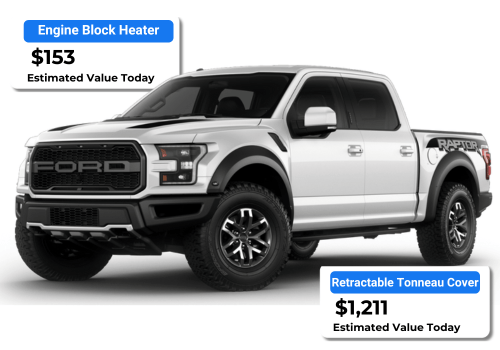
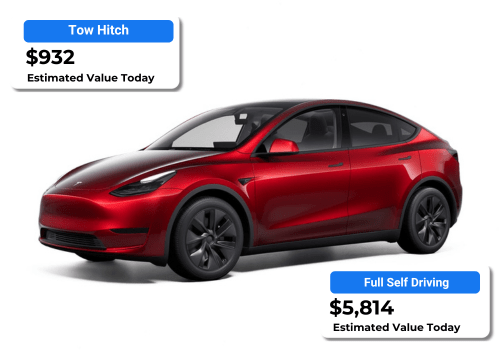
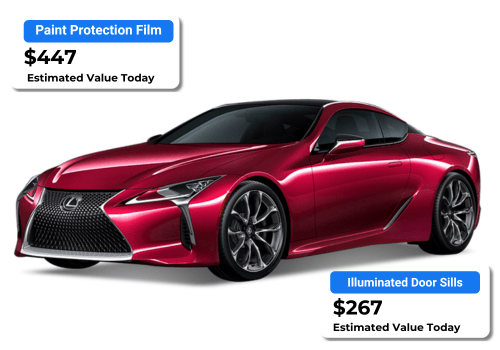
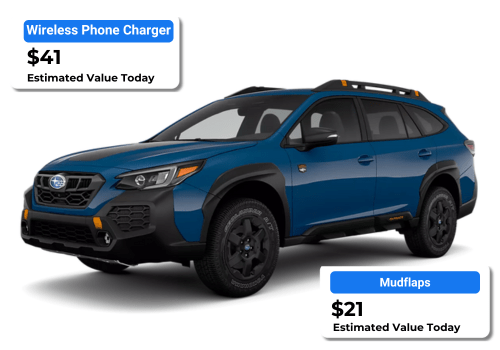
Article By: Dale Ogden
Dale Ogden is the founder of Check Your Spec and a recognized automotive expert with over 20 years of experience in vehicle valuations, forecasting, and asset management. A former Forecast Manager at CAP HPI – the UK’s leading vehicle valuation authority (think of them as the equivalent to Kelley Blue Book). He pioneered EV depreciation models now used by top manufacturers and has produced residual values for over 10,000 vehicles. Dale’s insights are trusted by automotive professionals, enthusiasts, and buyers worldwide.
Table of Contents
What Is My Audi A5 VIN?
Your Audi A5 VIN is a unique 17 character identifier assigned to your vehicle when it was built. It includes details such as where the car was manufactured, the engine and transmission type, and the model year.
Each section of the VIN serves a purpose. The first few characters identify the manufacturer and country of origin, the middle section describes the model and body style, and the final digits represent the production sequence number.
You can use the VIN to look up your A5’s exact factory options, verify authenticity, or order the correct parts. It’s printed on the lower corner of the windshield on the driver’s side, inside the door jamb, and listed on registration and insurance paperwork.
Free Audi A5 VIN Decoder
What Are Audi A5 Option Codes?
Audi A5 option codes, often called PR codes, are three character identifiers that describe every feature installed on your car when it left the factory. Each code represents a specific component or package, from engine and transmission type to paint color, interior trim, and technology options.
You can find your car’s option codes printed on the vehicle data label, which is usually located in the spare wheel well or inside the service booklet. These codes are also linked to your VIN and can be retrieved through an Audi dealer.
For example:
• 1X1 identifies the quattro all wheel drive system.
• 4A3 means heated front seats.
• 9VS indicates the Bang and Olufsen sound system.
• 8IT refers to LED headlights.
• 2H1 stands for Audi Drive Select.
Option codes make it easy to confirm your A5’s factory configuration, verify parts compatibility, or highlight key features when buying or selling. They form the basis of your car’s full build sheet and ensure accuracy when decoding your VIN.
How To Find Your Audi A5 Option List
Your Audi A5 option list shows every feature, package, and system that was installed on your car during production. It’s a complete record of how your A5 was configured when it left the factory, including details like paint color, trim, engine, transmission, and in car technology.
There are several ways to find your Audi A5 option list.
Vehicle data label
The easiest method is to check the vehicle data label, which lists a series of three character option codes. This label is usually found inside the spare wheel well or printed in the service booklet. Each code represents a specific piece of equipment, such as wheels, suspension, or interior materials.
Audi dealer or service center
An Audi retailer can provide an official factory build sheet using your VIN. This document lists all original specifications and packages applied to your vehicle when new.
myAudi app or online account
If you’ve registered your car through the myAudi portal, some build information may be visible there. Depending on your region, it can include the model variant, major equipment, and option packages.
What Is An Audi A5 Build Sheet?
An Audi A5 build sheet is a detailed factory record that lists every feature, component, and configuration your car was built with. It is the definitive reference for understanding exactly how your vehicle left production, including its paint color, engine, transmission, trim, and optional equipment.
The build sheet usually includes information such as:
• Factory option and package codes
• Engine and transmission details
• Exterior and interior specifications including paint, upholstery, and trim
• Optional features like lighting, infotainment, and driver assistance systems
• Production location and assembly data
You can request your Audi A5 build sheet from an Audi dealer using your VIN, or find partial details on the vehicle data label inside the spare wheel well or service booklet.
The build sheet is especially useful when verifying authenticity, ordering replacement parts, or checking the specification of a used A5. It is different from the window sticker, which shows retail pricing rather than technical configuration.
Audi A5 Engine Codes
Audi A5 engine codes identify the exact engine fitted to your car at the factory. Each code is a short combination of letters that defines the engine’s displacement, fuel type, and power output. These codes are important for verifying parts compatibility, checking specifications, or confirming your car’s original configuration.
Below are examples of common Audi A5 engine codes used across different generations. Always confirm your specific code on the vehicle data label, build sheet, or through a dealer using your VIN.
Petrol engines (TFSI and FSI)
CABA: 1.8 TFSI 160 hp
CDHB: 2.0 TFSI 180 hp
CAEA: 2.0 TFSI 211 hp
CPMA: 2.0 TFSI 220 hp
CVKB: 2.0 TFSI 190 hp (B9 generation)
CYMC: 2.0 TFSI 252 hp (B9)
DLZA: 2.0 TFSI mild hybrid 204 hp (B9.5 facelift)
DNPA: 2.0 TFSI mild hybrid 265 hp (B9.5 facelift)
CREC: 3.0 TFSI V6 333 hp (S5)
DECA: 3.0 TFSI V6 354 hp (S5 B9)
DAZA: 2.5 TFSI 400 hp (RS variants)
Diesel engines (TDI)
CAGA: 2.0 TDI 143 hp
CAHA: 2.0 TDI 170 hp
CJCB: 2.0 TDI 150 hp (B8 generation)
CNHA: 2.0 TDI 190 hp (B9)
DEUA: 2.0 TDI EVO 204 hp (B9.5 facelift)
CDUC: 3.0 TDI 245 hp (A5 and A5 Sportback)
DCPC: 3.0 TDI 272 hp (B9 generation)
DEWA: 3.0 TDI 286 hp (A5 and S5 diesel markets)
You can find the engine code on the vehicle data label in the spare wheel well, inside the service booklet, or stamped on the engine block near the front or timing cover. Always use the exact code when ordering engine parts, as even minor variations can affect compatibility.
Audi A5 Transmission Codes
Transmission codes identify the specific gearbox fitted to your Audi A5 at the factory. Each code defines the type of transmission, its gear count, and whether the car is front wheel drive or quattro all wheel drive. Knowing your transmission code is essential when servicing the car, ordering fluids, or confirming drivetrain compatibility.
Below are examples of common Audi A5 transmission codes used across different generations. Always verify your exact code on the vehicle data label or build sheet, as configurations can vary by model year and market.
Manual transmissions
GVE: 6 speed manual for 2.0 TFSI and 2.0 TDI engines
KMR: 6 speed manual for quattro models
MMT: 6 speed manual for 3.0 TDI engines
S tronic dual clutch transmissions
LUK: 7 speed S tronic dual clutch for 2.0 TFSI and 2.0 TDI
LHX: 7 speed S tronic with quattro all wheel drive
LHL: 7 speed S tronic DQ381 used in mild hybrid B9.5 models
LPE: 7 speed S tronic with improved wet clutch system (B9 facelift)
Tiptronic automatic transmissions
HKG: 8 speed Tiptronic for 3.0 TDI and 3.0 TFSI engines
NFB: 8 speed Tiptronic for S5 and high output quattro variants
NKT: 8 speed Tiptronic used in B9 2.0 TFSI quattro models
NKU: 8 speed Tiptronic for S5 and A5 Sportback with performance tuning
You can locate your transmission code on the vehicle data label in the spare wheel well or the service booklet. It may also be stamped on the gearbox housing. Always match the code exactly when replacing parts or performing maintenance, as similar gearboxes can have different ratios or electronic control units depending on year and trim.
Audi A5 Paint Codes
Audi A5 paint codes identify the exact exterior color and finish your vehicle was painted with at the factory. Each code is a short alphanumeric combination that corresponds to a specific color formula. These codes are useful when confirming originality, matching paint for repairs, or verifying the configuration shown on your VIN build sheet.
You can find the paint code on the vehicle data label located inside the spare wheel well or printed in the service booklet. It usually appears next to the word “Paint No.” or “Lacknummer.”
Below is a list of Audi A5 paint codes used across various generations, including solid, metallic, and pearl finishes.
LA3H: Salsa Red – solid finish used on early models
LA7W: Reflex Silver Metallic – classic silver tone seen across multiple generations
LA9V: Brilliant Black – traditional solid black offered on most trims
LB5N: Kingfisher Blue Metallic – distinctive deep blue used on select editions
LB7Z: Satin Silver Metallic – light metallic silver used in early production years
LC5M: Moonlight Blue Pearl Effect – dark pearl blue used from B8 onward
LC7V: Atlas Grey Metallic – mid grey metallic tone used on early A5 models
LD7Y: Quartz Grey Metallic – neutral metallic grey popular across several years
LH7W: Akoya Silver Metallic – bright silver tone used on premium trims
LM7W: Silver Metallic – standard metallic silver used throughout the range
LN5Y: Navara Blue Metallic – deep blue metallic found on B9 models
LP5X: Sepang Blue Pearl Effect – bold performance color on S5 and RS5 variants
LR7L: Ice Silver Metallic – light metallic silver used through B7 to B9 generations
LS9R: Glacier White Metallic – bright metallic white used on modern models
LX1X: Manhattan Grey Metallic – dark metallic grey available on later B9 trims
LX5Q: Scuba Blue Metallic – medium metallic blue found on B8 and early B9 models
LX7Z: Dolomite Grey Metallic – dark metallic grey used on higher trim levels
LX8X: Navarra Blue Metallic – premium deep blue offered on B9 and newer
LX9X: Mythos Black Metallic – glossy black metallic popular on S line and RS models
LY1P: Dakota Grey Metallic – warm grey metallic used across B8 and B9 models
LY3U: Tango Red Metallic – bright metallic red featured on sport and S line trims
LY7C: Nardo Grey – solid flat grey associated with RS and performance models
LY9C: Ibis White – solid white offered across all A5 generations
LY9T: Mythos Black Metallic – rich black metallic used in current production
LZ7H: Meteor Grey Pearl Effect – pearl grey tone used on mid generation models
LZ7S: Daytona Grey Pearl Effect – signature RS color with a deep metallic finish
LZ9Y: Phantom Black Pearl Effect – classic pearl black available across many trims
Paint codes can differ slightly between regions or years even when the color name appears the same. Always verify your specific code using the build sheet or VIN to ensure an exact color match when refinishing or restoring your A5.
Audi A5 Exterior Trim Codes
Exterior trim codes identify the factory fitted styling details and exterior features on your Audi A5. These include mirror housings, roof rails, body accents, and special exterior packages. Knowing your trim codes helps confirm your car’s original specification and ensures the correct parts or finishes are used for replacements or upgrades.
Below are examples of exterior trim codes used across Audi A5 models. Equipment may vary by model year, trim level, and market.
EK: Black styling package or blackout exterior trim, often used on S line and Black Edition models
4ZP: High gloss black exterior trim surrounding the windows and grille
4ZB: Bright chrome exterior trim package for luxury or base models
5J2: Rear spoiler painted in body color, used on S line and sport models
5J4: Rear spoiler in carbon fiber or gloss black for RS and performance variants
6FA: Body colored exterior mirror housings
6FJ: Gloss black mirrors, often part of the Black Optics package
6XE: Electrically adjustable and heated mirrors
6XL: Electrically adjustable, heated, and folding mirrors with memory function
6XK: Carbon fiber exterior mirrors for RS5 and special editions
2Z0: Without nameplate set, base configuration
2Z7: Model designation badges deleted, Audi exclusive option
3S1: Roof rails in black finish, typically on A5 Sportback and allroad models
3S2: Roof rails in aluminum silver, standard on A5 allroad
PQD: S line exterior package with sport bumpers and side skirts
PQA: Standard exterior trim with chrome detailing
PQA1: Titanium black exterior styling package
Audi A5 Wheel Codes
Wheel codes identify the factory installed wheel size, style, and finish for your Audi A5. These codes are essential when replacing wheels, verifying original fitment, or checking compatibility with brake and suspension systems.
Below are examples of wheel codes and sizes used across different Audi A5 variants. Always verify by VIN or dealer printout for accuracy, as codes can differ by year and region.
C4K: 18 inch alloy wheels in 5 twin spoke dynamic design
C6Z: 19 inch alloy wheels in 5 arm rotor design finished in titanium matte
C8J: 20 inch alloy wheels in 5 segment spoke design, gloss turned finish
C8K: 20 inch forged wheels in 5 arm flag design, exclusive to S5
C8L: 19 inch alloy wheels in multi spoke V design, polished finish
C8M: 18 inch wheels in 5 spoke star design, standard on base A5 models
C8Q: 19 inch sport wheels in 5 arm trapezoid design
C8R: 19 inch Audi Sport wheels in 10 V spoke design
C8S: 20 inch RS design forged alloy wheels, polished edge
C8T: 19 inch turbine style wheels in machined silver
C8V: 18 inch twin spoke wheels in silver metallic finish
C8W: 20 inch 5 Y spoke design, optional upgrade on S line
C8X: Winter wheel preparation with simplified 17 inch steel design
C8Y: 20 inch forged alloy wheels with anthracite finish, used on RS5
Audi A5 Lighting Codes
Lighting codes identify the type of exterior lighting system installed on your Audi A5, including headlights, taillights, and auxiliary systems. These codes help determine factory lighting features and compatibility for replacements or upgrades.
Here are examples of lighting codes found on Audi A5 models. Always confirm exact details by VIN or dealer printout, as content varies by year, trim, and market.
8IT: LED headlights with dynamic turn signal
8IU: Matrix LED headlights with dynamic front indicators
8G1: High beam assist
8X1: Headlight washer system
8Q3: Automatic headlight range adjustment (dynamic self leveling)
8WP: LED rear combination lamps with dynamic turn signal
8VP: Full LED taillights with sequential indicator
8WH: Cornering or static turning light
8WM: All weather light function
8SP: Rear fog light integrated into bumper assembly
8TB: Adaptive light control system (older xenon models)
8BP: Bi xenon headlights with LED daytime running lights
8SM: LED daytime running lights only (base trims)
8Y1: Two tone horn, often paired with lighting or visibility packages
Note: Lighting equipment differs across trims such as Premium, Premium Plus, and S line or RS variants. Matrix and laser lighting options are more common on newer or performance models, while earlier versions may have halogen or xenon systems. Always verify with your vehicle’s build data for precise configuration.
Audi A5 Interior Option Codes
Interior option codes describe the materials, comfort features, and technology inside your Audi A5. These codes reveal everything from seat design and trim finishes to climate control and sound system choices. Because interior equipment varies by year and trim, always confirm details using your VIN or a dealer build sheet.
Seating
4A3: Heated front seats
4A4: Heated front and rear seats
3PN: Power driver seat with memory function
Q1A: Standard front seats
Q1D: Sports seats with enhanced bolsters
N5W: Fine Nappa leather upholstery
N0K: Leather and Alcantara combination
7P1: Power lumbar support, driver and passenger
3L5: Front seats with massage function
Steering Wheel
1XX: Leather wrapped 3 spoke multifunction steering wheel with paddles
2PF: Flat bottom sport steering wheel
2C7: Manually adjustable steering column in height and reach
2ZD: Heated steering wheel
Climate Control
9AK: Three zone automatic climate control
9AQ: Dual zone automatic climate control
9M9: Auxiliary heater (model dependent)
9AD: Climatronic system, CFC free
Trim and Finish
5TG: Decorative inlays, Aluminum
5MB: Decorative inlays, Piano Black
5MK: Decorative inlays, Carbon Atlas
6NJ: Headliner in black fabric
4L6: Auto dimming interior rearview mirror
6E3: Front center armrest
Sound and Multimedia
9VD: Audi sound system
9VS: Bang & Olufsen 3D sound system
9VC: Sound package with subwoofer
ER1: Regional code for radio (ECE or US market)
Lighting and Comfort
QQ1: Ambient lighting package
QQ2: Extended ambient lighting package, multicolor
4E7: Power tailgate with gesture control
7X2: Park distance control front and rear
Audi A5 Safety and Driver Assistance Codes
Safety and driver assistance codes identify the systems that support driving, collision avoidance, and passenger protection in your Audi A5. These features differ between trim levels, regions, and model years, so it’s best to verify them using your VIN or dealer printout.
Driver Assistance
PCF: Assistance package including lane assist and adaptive cruise control
7X5: Park assist with steering guidance
7X2: Front and rear parking sensors
UH2: Hill hold assist
KA2: Rear view camera
KA6: 360 degree surround view camera system
8T8: Adaptive cruise control with stop and go
QK1: Lane departure warning and lane keeping assist
QR9: Traffic sign recognition
7Y1: Side assist with blind spot monitoring
PCE: Driver assistance package with Audi pre sense front and side
7L8: Start stop system with regenerative braking support
Safety
4UF: Front airbags for driver and passenger with passenger airbag deactivation
4X3: Side airbags in front and rear with curtain protection
1AT: Electronic stabilization program with traction control
1AS: Basic stability control
7K6: Tire pressure monitoring system, active
3B7: ISOFIX and top tether mounts for child seats
4H5: Child safety locks, mechanical or electronic
1N3: Speed dependent power steering
8N6: Rain and light sensor
1G8: Vehicle tool kit and breakdown set
Note: Higher trims and performance variants like the S5 and RS5 may include advanced safety features such as predictive pre sense, adaptive cruise assist, and lane centering. Some systems are bundled into optional Driver Assistance or Technology packages, depending on the model year.
Audi A5 Infotainment and Communication Codes
Infotainment and communication codes identify the multimedia, navigation, and connectivity systems integrated into your Audi A5. These options determine the display size, sound quality, connectivity features, and overall user experience inside the car. Always confirm the exact configuration using your VIN or dealer build sheet, as equipment varies by trim and production year.
Navigation and Connectivity
7UG: MMI Navigation Plus with MMI touch response
7UF: MMI Radio Plus with 10 inch display
7T2: Navigation system with high resolution color screen
7T6: Navigation system with voice control
EL3: Online service, Audi connect with SIM card
EL4: Audi connect with Wi Fi hotspot
9ZK: Smartphone interface with Apple CarPlay and Android Auto
9ZX: Bluetooth hands free interface
8DY: Audio interface with USB and auxiliary connections
9S8: Digital instrument cluster (Virtual Cockpit)
9S9: Virtual Cockpit Plus with customizable displays
8WQ: Head up display
Sound Systems
9VD: Audi sound system
9VS: Bang & Olufsen 3D sound system
9VG: Sound package with additional speakers
9VK: Premium sound system with subwoofer
Communication and Data Systems
8YQ: Online connectivity unit with data communication module (DCM)
8Y1: Two tone horn with integrated communication electronics
9ZB: Bluetooth and WLAN interface
ER1: Regional radio code (ECE or US)
QV3: TV reception module, market dependent
Additional Equipment
UF7: Audi music interface
UI2: USB charging ports front and rear
KA4: Rear view camera system integrated into MMI
9WQ: Emergency call and service system
Audi A5 Common Option Codes
Common option codes cover general equipment and configurations found across most Audi A5 models. These codes include standard convenience features, trim identifiers, and build options that define how the vehicle was assembled. They can be used to verify factory authenticity or identify compatible replacement parts.
0TD: Floor mats in front and rear
0VF: Owner’s manual and service booklet
1SA: Without underbody protection
1XW: Leather multifunction steering wheel
1X1: Four wheel drive system (quattro)
2H1: Drive select system
2PF: Flat bottom sport steering wheel
2WA: Without additional tires
3FA: Without roof insert or sunroof
4E0: Without servo closing for tailgate or trunk lid
4GF: Heat insulating glass
4KC: Side and rear windows in heat insulating glass
4L6: Auto dimming interior rearview mirror
4K4: Central locking system
4X1: Front side airbags
5D1: Carrier frequency 433.92 MHz
5J0: Without rear spoiler
6Y0: Without cruise control system
7K1: Tire pressure monitoring system
8Y1: Two tone horn
9T1: Heated washer nozzles
F0A: No special purpose vehicle standard equipment
GZ2: Power tailgate
J0B: Battery 380 A 68 Ah
L0L: Left hand drive
NM1: Engine cover
NY0: Battery and generator capacity standard
QJ1: Chrome exterior trim package
QZ7: Power steering, variable assist
TL0: Base engine
U0A: Instrument cluster standard version
VC0: Without remote controlled garage door opener
VF0: Standard pedal cluster
V0A: Tires without specification of brand
1G8: Breakdown set
1PA: Standard wheel bolts
1S1: On board tool kit
2Z0: Without nameplate set
3B4: Child seat anchor points ISOFIX
6C0: Without additional body covers
6E3: Front center armrest
6V1: Rear trim panel
6W1: Front license plate holder
6Y2: Top speed limiter
7A0: Without alarm system
7E6: Electric auxiliary air heater
7G0: Without tracking system preparation
8WA: Without front fog lights
9JA: Without smoker package
9Q1: Multi function display
AV1: Driving on the right
B0A: Component parts set without country specific design requirement
How Audi A5 Options Affect Value
Factory options play a major role in determining the resale and desirability of an Audi A5. Buyers often pay a premium for models with sought after equipment, while missing features can limit appeal. Understanding how options affect value helps both buyers and sellers make informed decisions.
Performance and Drivetrain Options
Quattro all wheel drive, adaptive suspension, and sport differential systems can significantly boost value. Cars equipped with these systems are often more desirable in used markets, especially in colder or performance focused regions. Manual transmissions are rare and appeal to enthusiasts, while S tronic dual clutch automatics command value for their refinement and reliability.
Interior and Technology Packages
Trims featuring Virtual Cockpit, Bang & Olufsen sound, or premium leather interiors generally hold their value better. Options like heated and ventilated seats, ambient lighting, and memory seating contribute to comfort and resale appeal. Buyers increasingly prioritize technology, so features such as smartphone integration and driver assistance systems are key to retaining value.
Exterior Styling and Paint
Special paint finishes such as Daytona Gray Pearl, Navarra Blue Metallic, and Mythos Black Metallic add visual impact and higher resale value. S line or Black Optic exterior packages that include upgraded wheels, gloss black trim, and sportier design elements also tend to command stronger resale interest.
Driver Assistance and Safety Features
Advanced safety options like adaptive cruise control, lane assist, and 360 degree cameras are now expected on modern luxury cars. Vehicles equipped with the full Driver Assistance Package tend to sell faster and closer to asking price, reflecting growing buyer demand for convenience and safety technology.
Documentation and Verification
Buyers and appraisers give higher value to vehicles with verified factory build sheets, option lists, or original window stickers. These confirm authenticity and help differentiate genuine factory equipment from aftermarket upgrades. Keeping detailed records of the build configuration, service history, and options can add measurable resale confidence.
Audi A5 FAQ
Can my Audi A5 VIN tell me which options my car has?
Does the VIN show which factory produced my Audi A5?
How do options affect the resale value of my Audi A5?
Unlock accurate valuations for your car’s features in seconds – find out what your options are worth today and in the future.



